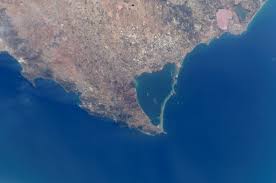The Mar Menor: A Vital Ecosystem in Crisis

Introduction
The Mar Menor, a large coastal lagoon in the Murcia region of Spain, holds significant ecological and economic importance. Spanning 170 square kilometres, it is one of the largest saltwater lagoons in Europe, known for its unique biodiversity and popularity among tourists and local fishermen alike. However, the lagoon is currently facing numerous threats, chiefly from pollution and climate change, prompting urgent calls for protective measures.
Current Challenges Facing Mar Menor
In recent years, Mar Menor has witnessed alarming environmental degradation. Reports indicate that excessive agricultural runoff, primarily from the surrounding agricultural lands, has led to increased nutrient loading in the lagoon. This nutrient influx has resulted in harmful algal blooms that deplete oxygen levels, thereby threatening marine life. The effects have been so profound that certain species of fish and other marine organisms have struggled to survive.
Additionally, over-exploitation of resources, including unsustainable tourism practices, has further exacerbated the lagoon’s plight. Recent studies reveal that the water quality has severely declined, with increased salinity and lower biodiversity levels being recorded. Local environmentalists warn that without immediate and effective intervention, the Mar Menor could suffer irreversible damage.
Government and Community Responses
In response to these challenges, both the Spanish government and local communities have begun implementing measures aimed at protecting the Mar Menor. Initiatives include stricter regulations on agricultural runoff and investment in sustainable tourism practices. This summer, local authorities have also begun to enhance surveillance to prevent illegal fishing practices and monitor water quality more closely.
International organisations have also taken notice, with the European Union planning to scrutinise Spain’s environmental practices to ensure the Mar Menor receives much-needed protection funding. Furthermore, local advocacy groups have been actively campaigning for greater transparency in governmental decision-making regarding developments in the area.
Conclusion
The Mar Menor stands as a vital ecological resource, not only for Spain but for the global environment. Its ongoing crisis serves as a stark reminder of the impact human activities can have on natural ecosystems. Continued collective efforts from government bodies, local communities, and international organisations are critical for the preservation of this unique lagoon. Without timely and effective intervention, the Mar Menor could face long-term ecological consequences that would affect biodiversity, tourism, and local economies for generations. As awareness grows, so too does the hope for a sustainable future for this cherished natural treasure.







